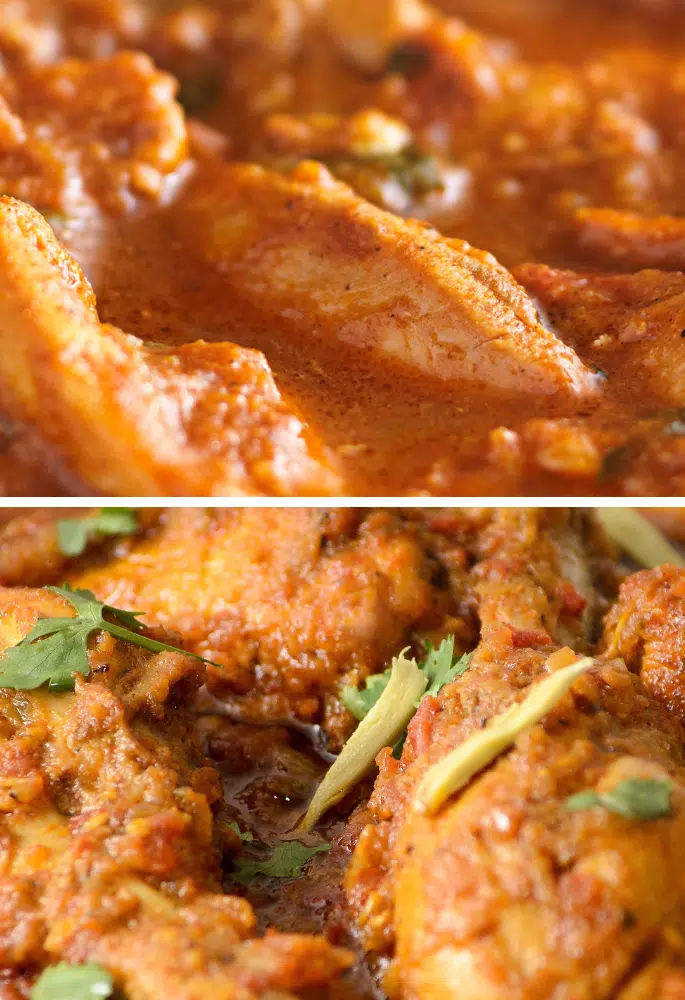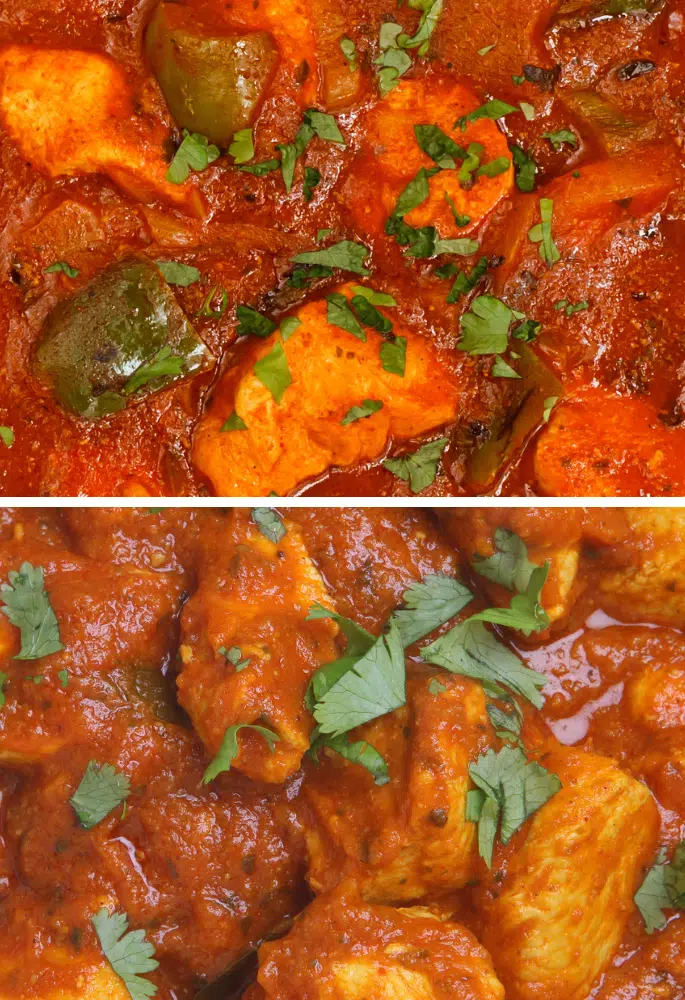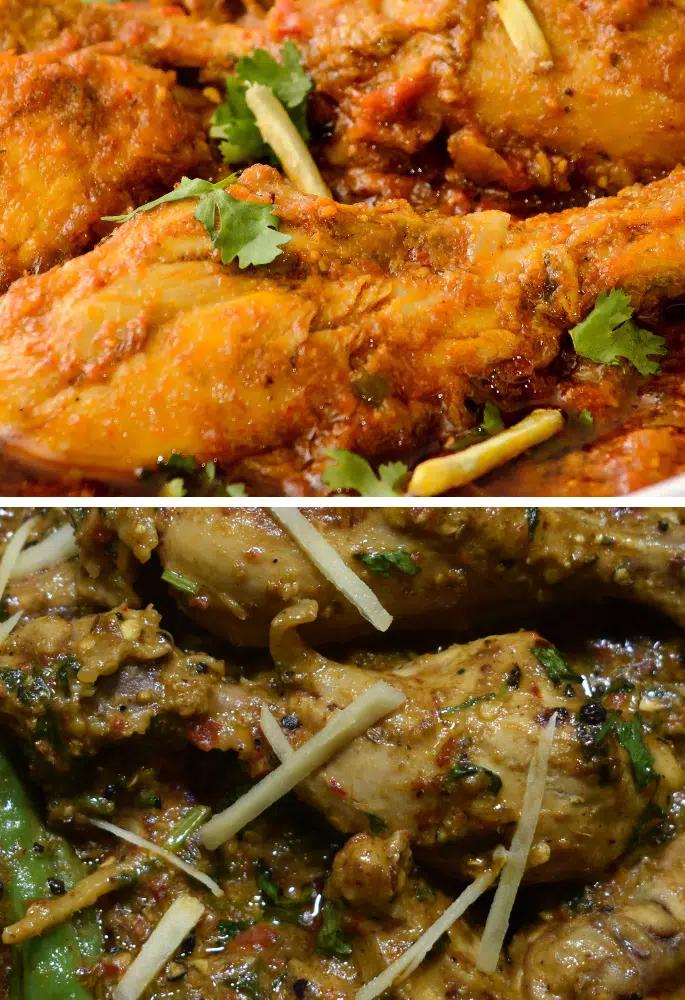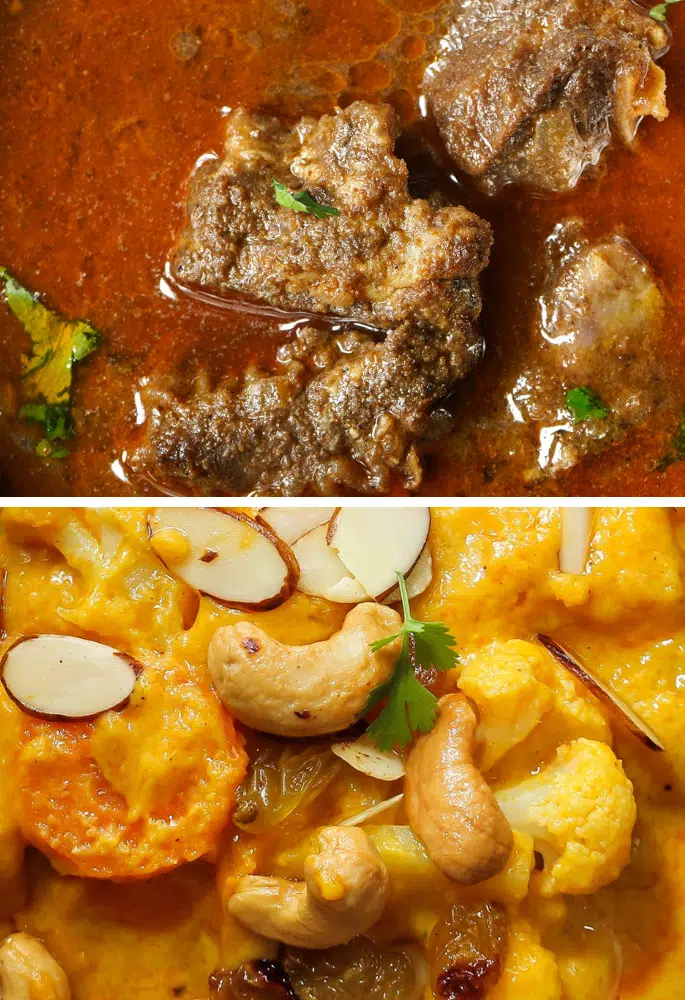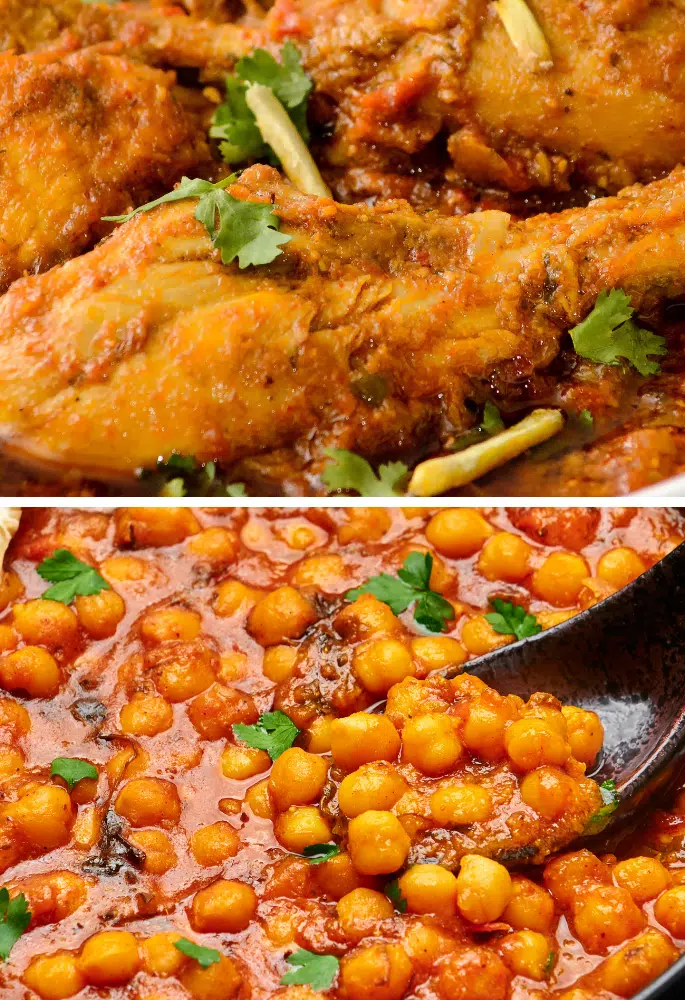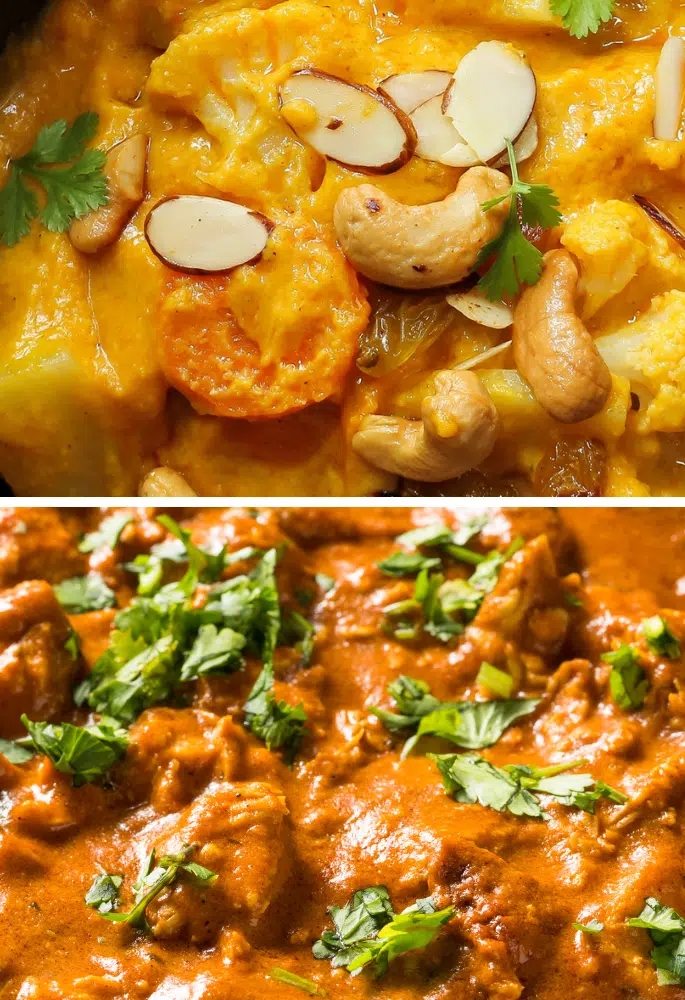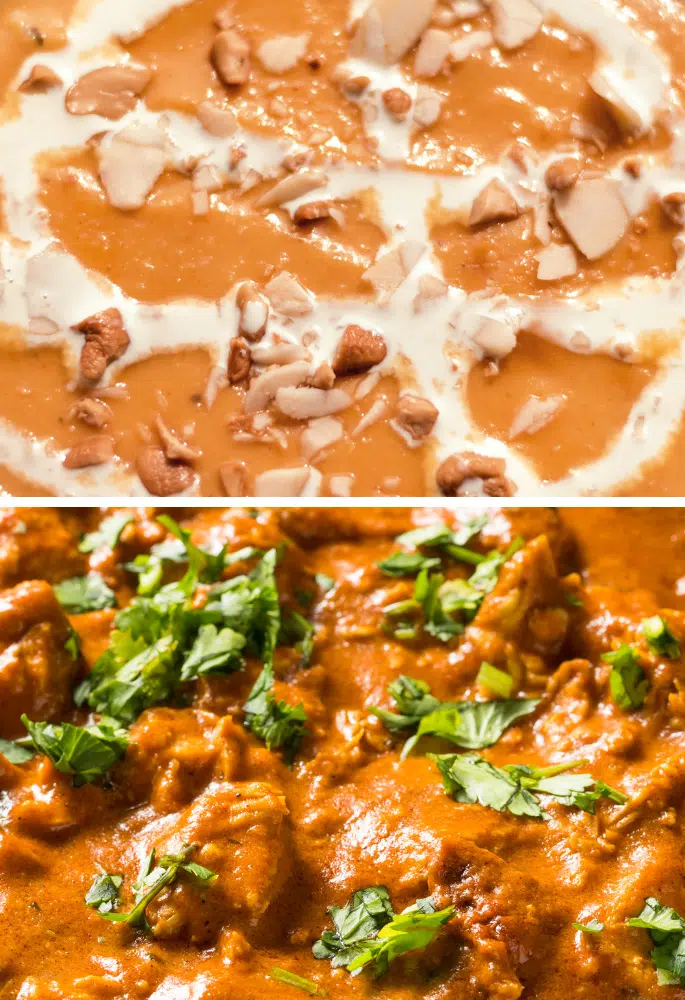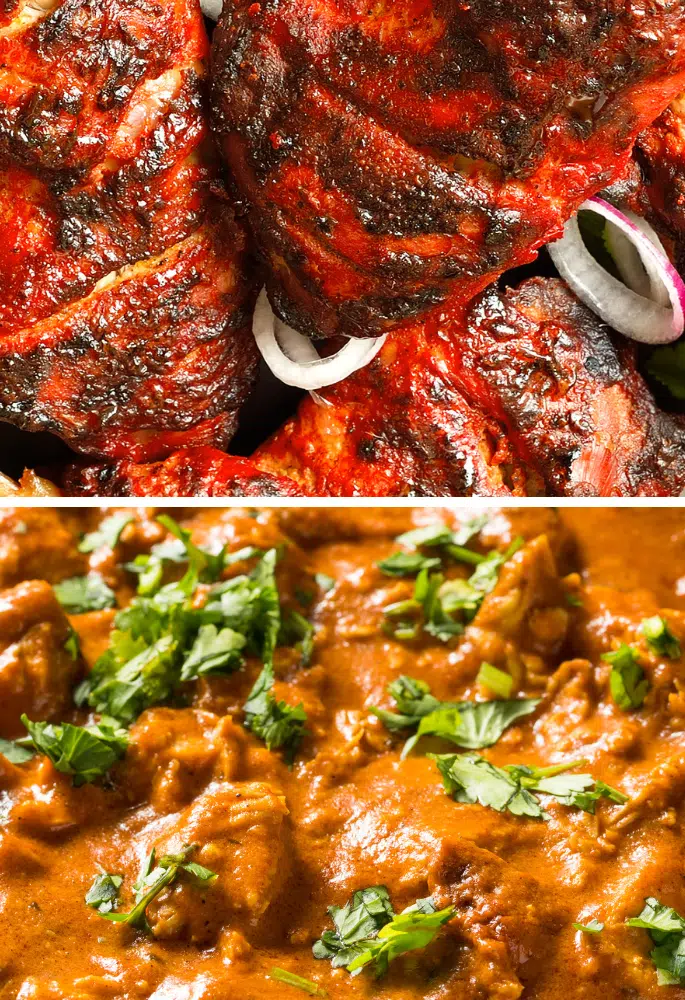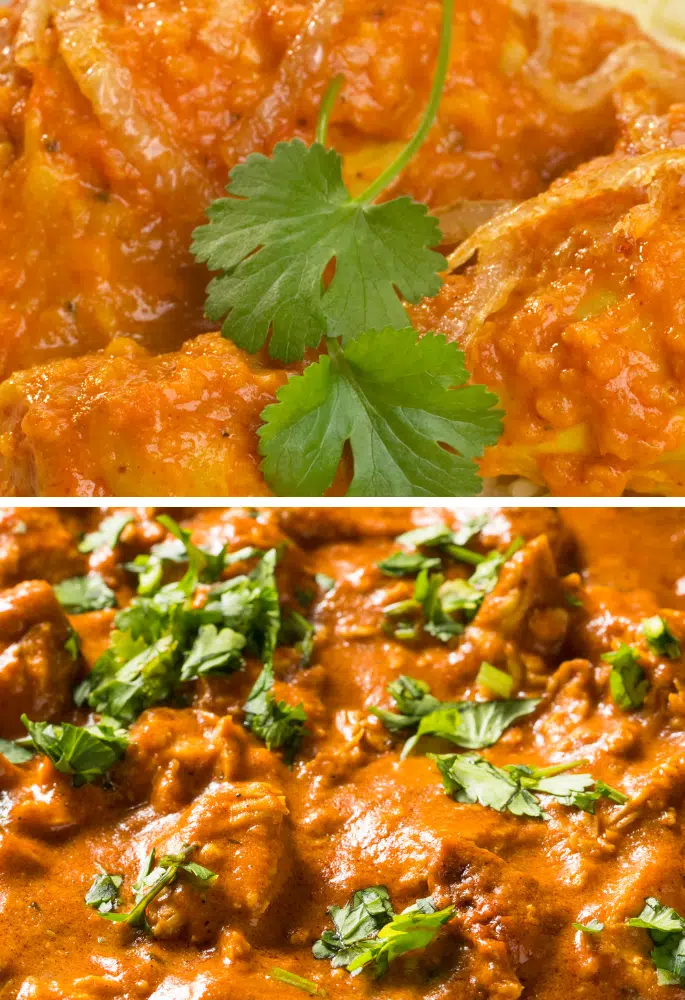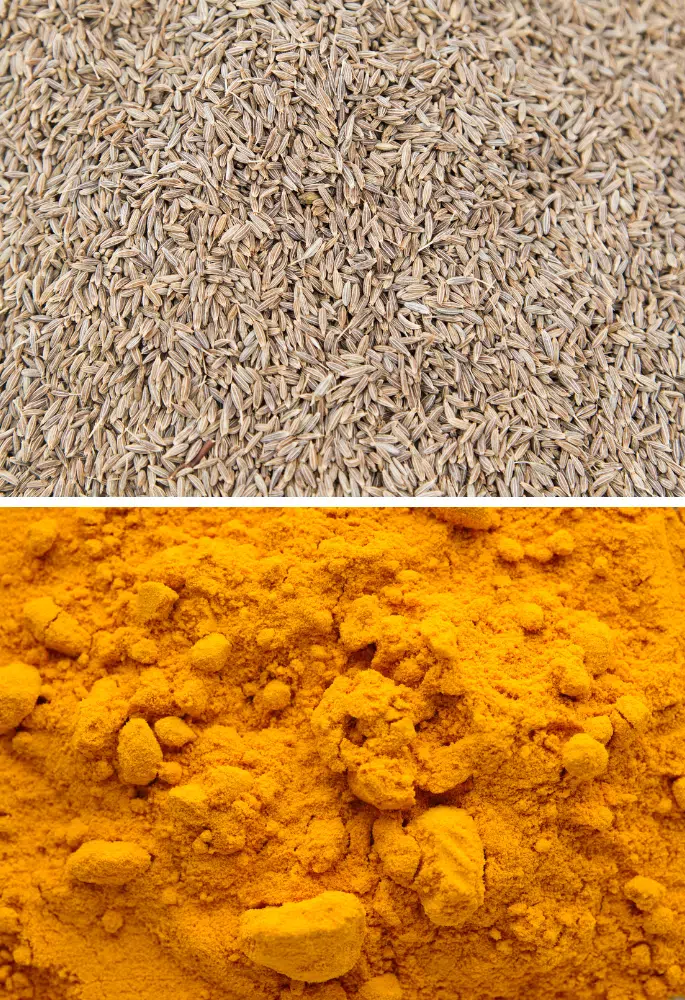Bhuna and Biryani are two iconic dishes that are widely loved for their rich flavours and intricate cooking methods. Both dishes have roots in South Asian cuisine and are popular across various regions, each bringing its own set of traditions, techniques, and taste profiles to the table.
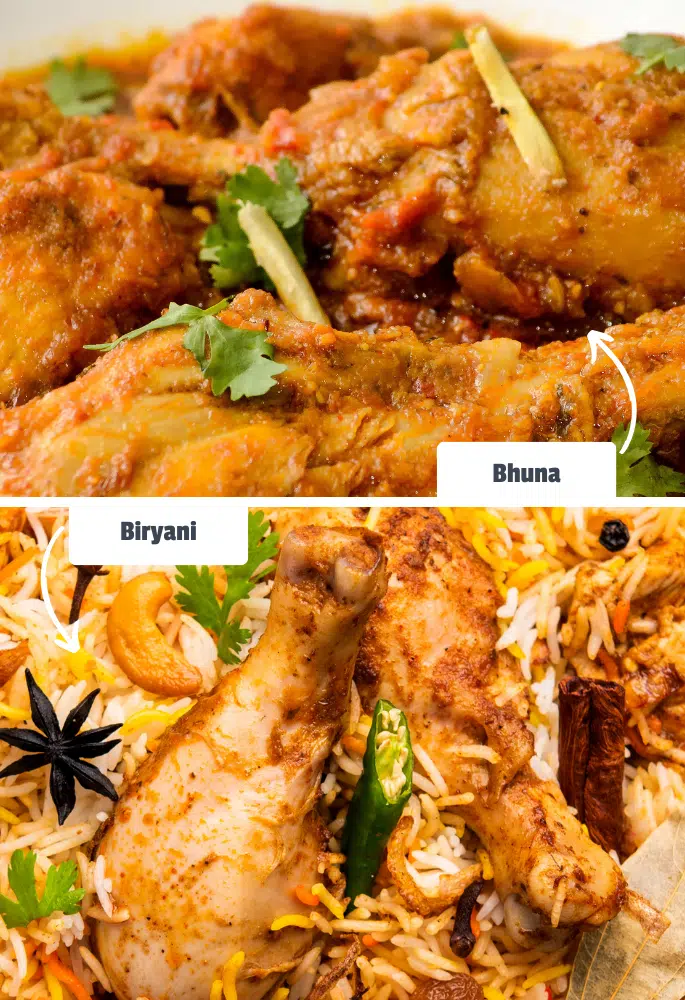
Bhuna is a cooking process as well as a dish characterized by slow-cooking ingredients to extract deep flavours, while Biryani is a layered rice dish, combining meat, rice, and spices, known for its complexity and aromatic presence.
What is Bhuna?
Bhuna refers to both a cooking technique and a dish in Indian and Bangladeshi cuisine. The term ‘bhuna’ is derived from a process involving the gentle frying of spices and ingredients to create a thick, richly spiced sauce.
Typically, in a bhuna dish, meat is added to the spices and cooked in its own juices, which allows for deep flavour penetration and a concentrated sauce.
This method emphasizes the reduction of the sauce to the point where the oil separates, signifying the meat and spices have been thoroughly cooked.
What is Biryani?
Biryani is a celebrated dish in South Asian cuisine known for its vibrant flavours, aromatic spices, and layered ingredients. It’s a complex dish that combines fragrant basmati rice, marinated meat (or vegetables), and a medley of spices such as saffron, cardamom, and cloves.
The preparation involves cooking the rice and meat separately before layering them in a pot, where they finish cooking together.
This process allows the flavours to infuse the rice, creating a harmonious and richly flavoured dish. Biryani is often garnished with fried onions, nuts, and fresh herbs, adding texture and additional layers of taste.
Similarities Between Bhuna and Biryani
There are a handful of things that make bhuna and biryani surprisingly similar:
- Cultural Significance: Both dishes are integral to South Asian cuisine, with strong cultural roots and popularity in various regions, reflecting the diversity and richness of this culinary tradition.
- Spice Usage: Both Bhuna and Biryani utilize a range of spices that are quintessential to Indian cooking, such as turmeric, cumin, and garam masala, to create their distinctive flavours.
- Main Ingredients: Both dishes can be prepared with a variety of meats or vegetables, making them adaptable to different dietary preferences and available ingredients.
Differences Between Bhuna and Biryani
There’s no denying that there are differences – and plenty of them. Here are the main things that set these two apart:
- Cooking Technique: Bhuna involves frying spice pastes with meat until the oil separates, emphasizing the reduction and concentration of flavours. In contrast, Biryani involves layering partially cooked rice with meat or vegetables and spices, allowing them to steam together.
- Texture: Bhuna typically results in a drier dish with a thick coating of spices around the meat, whereas Biryani is moister, with fluffy rice and distinct layers of meat and spices.
- Flavour Complexity: Biryani is generally more aromatic and complex due to the layering of flavours and use of a wider variety of spices and garnishing. Bhuna has a more singular, deep flavour profile focused on the caramelization and concentration of its base ingredients.
- Accompaniments: Bhuna is often served with bread like naan or roti to mop up the thick sauce, while Biryani is typically a standalone dish that might be accompanied by raita (yoghurt sauce) or salad to balance its richness.
Bhuna vs Biryani: Which Wins?
It’s time to pick your fav. If you had to walk into your local takeaway today and order EITHER a bhuna or a biryani, which are you picking?
Do You Prefer Bhuna or Biryani?
Hailing from Liverpool, Oliver is an adventurous chef with a penchant for exploring diverse cuisines and novel ingredients. Ollie, combining his love for local British flavours with global influences, brings innovation and charm to home cooking.


